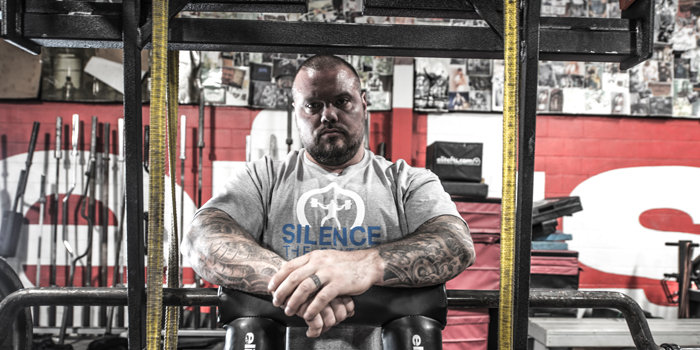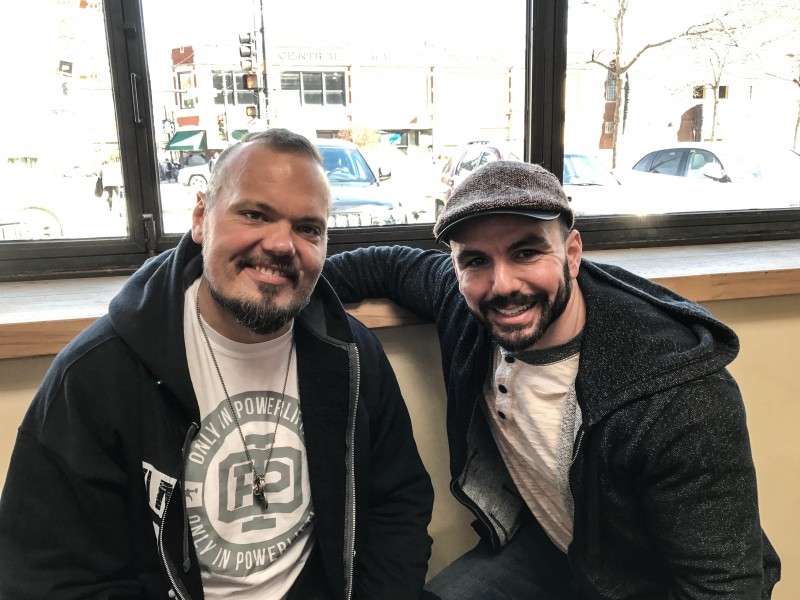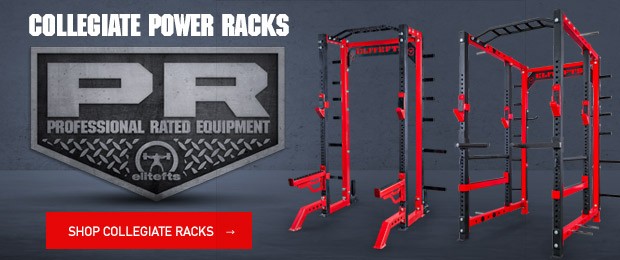
During my years of training for sports and my career playing them, I have been extremely fortunate to be around some phenomenal strength and conditioning coaches. Staying in contact with them throughout the years and being able to call so many of them my friends is amazing, and I am very thankful for it. Learning and sharing ideas to complement the template I run with these people has really helped me become better in all that I do. One of these coaches is Paul Goodman, Head Strength and Conditioning Coach of the Chicago Blackhawks. I recently got a chance to catch up with him and talk to him about his experiences as a strength and conditioning coach.
Goodman was part of many sports growing up and says that despite never excelling on the competitive field, he always worked and trained to be the best that he could be. In 1992 he attended the University of Wisconsin-Madison intending to pursue medical school. He became a strength and conditioning intern in the athletic department in 1994, working with the football program for two consecutive years. After graduation, he accepted an entry-level position to help with football and hockey, and within six months he was moved up to the head position for the hockey program. “The position I was in garnered growth and I eventually took hold of both the men's and women's hockey programs, volleyball, wrestling, and tennis, all while assisting the football program,” Goodman said.
RECENT: 7 Interviews with Lifters and Coaches I Respect
While in this position Goodman also earned his Master’s of Education degree and remained in the department for six years before moving to the University of Vermont as Director and Head Strength and Conditioning Coach. He served in that position and built the department up from nothing (he was the first strength coached ever hired by the athletic department) to being nationally recognized. In 2008 Goodman then moved to the Chicago Blackhawks, where he is now in his 10th year. In that time he has been part of three Stanley Cup champion teams and has completed a second masters degree, this time in applied exercise science and sports performance. He also plans to pursue a PhD in Human Performance.
Goodman does not have one particular individual he points to as the biggest influencer of his success, but he can name many coaches and academics that have impacted him. “I have met and learned from very prominent figures in the strength and conditioning and sports science world, and absorbed some of the best insight and coaching from individuals doing their own thing without recognition,” he said. “Everyone has something to offer and I am not above thanking each of those individuals along my journey. To single one out may, in fact, devalue the many who have been formidable in shaping who I am as a coach, but more importantly, as a person.”
With experience at both the collegiate level and with world-class NHL athletes, Goodman has trained athletes of all skill levels and experience. He says that the method of execution might change based on who he is training, but the philosophy remains the same:
“In college, with an isolated few outliers, most of the athletes that a coach trains are between 17 and 22 years of age, give or take. [At the pro level], the range can be from 18 to upwards of 40. In every realm I train an athlete, the program is specific to the individual needs of that athlete in that particular sport. It is training maturation and acuity determinant based on evaluation, assessment, and observation.”
The difference in execution, Goodman adds, is that in college most athletes can be effectively trained with a plan that works for the masses of the team. There are differences, but the program can be mostly the same. In the NHL, each member of a 23-man active roster is unique. They have different needs and need different focuses. The other difference is in technology and evaluation tools. “Training ideas, methods, and philosophies are much more readily available for evaluation due to technology,” Goodman said. “The professional athlete of today is generally more in-tune, educated, and savvy of good and bad training.”
This makes it easier to know the athletes will follow a plan and stay committed to what they need to do to succeed. “I have and continue to work with some players that do not inquire and just simply do,” Goodman said. “You tell them what to do, eat, drink, and sleep, and they do it. There are others that inquire and want to dig deeper. I recognize the evolution and can only speculate that collegiate athletes are doing the same, but I have been removed from that environment for a bit now and can only really speak to what I know.”
At the professional level, Goodman sees many of the top athletes in NHL demonstrate world-class abilities, with often very small gaps separating the top of the roster from the bottom of the roster:
“The athletes that I am fortunate to be able to work with have some of the rarest physiological traits and abilities. In the midst of all the evaluation processes these athletes go through, it is quite possible to find very little, if any, discrepancies. They can achieve extremely high levels of repeatable power while also elucidating high levels of anaerobic stress, and are able to recover very rapidly from those levels. We are talking about mere fractions that separate the top from the bottom of a roster in terms of traits.”
These very minor differences force Goodman to search for even the smallest advantages he can give his athletes. “My job is to continually aid the player in achieving even slight percentage increases in variables throughout their careers, especially as they age, so that they are able to perform at their highest levels continuously and also feel the best they can day in and day out,” Goodman said.
WATCH: Mark Lambert — Strength Coach for the Tampa Bay Lightning of the NHL
To achieve these slight percentage increases, Goodman says he partners with the athletes and take ownership of his part of the process, but not credit. Ownership, to him, is very different than credit. “It means satisfaction in seeing the [achievements] and aspects that someone has worked on come to the fore and provide for them ability or aptitude,” he said. “It could be a rehab milestone or scoring the game-winning Stanley Cup goal.”
His short-term goal is to help athletes achieve these feats. “I wish to continue to take pleasure in these feats as they happen and never get too far-sighted, or else there is a chance to miss or underappreciate them,” he said. “This parlays into my goal to continually provide the best knowledge, service, and approach to the personnel of [a] given season’s team. I am in the present. I want to evoke and achieve individual and organizational success.”
From a broader perspective, in the long-term Goodman wants to prepare himself “for the evolution of the strength and conditioning coach to be part and parcel of a total sports performance foundation.” To him, this means connecting all of the components that influence performance, which is how he envisions the future:
“Training, medicine, nutrition, and mental skills are four prongs of what encompasses an athlete's development. If one is lacking then invariably another will suffer and overall performance can suffer. I see one person tying that bind. The one person does not fit all hats, by any means, but rather directs a program by incorporating technology, sciences, and evaluations to provide individual programming and focus that the people assigned to those areas can then aid a given athlete. But one person needs to synthesize that information and work to conjoin all of these areas.”
In addition to coaching, Goodman has also competed in powerlifting, which he says appeals to him because it is all about being strong, both mentally and physically. “It’s conquering,” he said. “It’s hard work. There isn’t any going through the motions or just getting a good sweat in. You have to plan, focus, execute, and strive.” In powerlifting he has squatted 525 pounds, benched 330 pounds, and deadlifted 545 pounds, all raw.
For both coaching and powerlifting, Goodman says elitefts has been a big influence. “I would like to acknowledge Dave Tate and elitefts as superior contributors to the world of strength and development,” he said. “He and his work are unbelievable resources for me to better myself, both in my coaching and powerlifting aspirations.”











